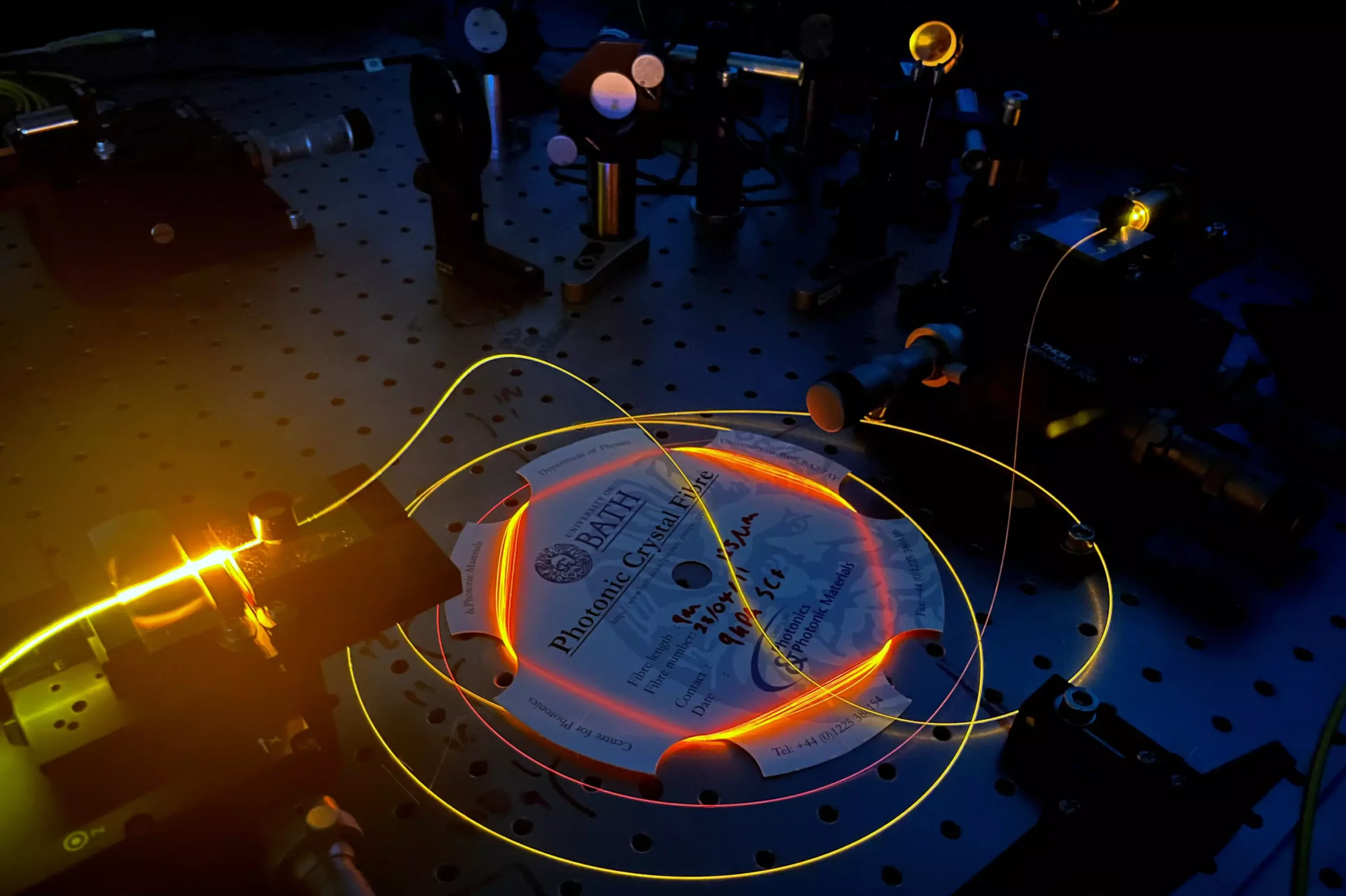As we stand on the brink of the quantum computing revolution, the age-old problems of data transfer and security in our traditional telecommunications infrastructure are becoming increasingly glaring. A remarkable shift is underway led by physicists from the University of Bath, who are pioneering a new category of optical fibers designed explicitly to navigate the unique demands posed by quantum technologies. This advancement not only highlights human ingenuity but also illustrates the immense potential that quantum computing holds for our future.
Quantum technologies are heralded for their potential to transcend the limits of classical computing, enabling us to tackle previously insurmountable challenges in fields ranging from medicine to cryptography. However, the optical fibers that carry the lifeblood of today’s internet were not conceived with quantum capabilities in mind. Traditional fibers, with their solid silica cores, are ill-equipped to transmit the delicate quantum signals required for successful quantum communication. Dr. Kristina Rusimova and her team at Bath recognize this fundamental flaw and are not just adapting existing technologies; they are crafting entirely new solutions that promise to usher us into a new era of digital communications.
The Innovation at the Heart of Specialty Fibers
The specialty optical fibers developed at Bath exhibit a revolution in design through their micro-structured cores, featuring intricate arrays of air pockets. This sophisticated architecture contrasts sharply with conventional optical fibers and allows for unprecedented manipulation of light properties. According to Dr. Rusimova, understanding and effectively tapping into the wavelengths utilized by quantum technologies is crucial. Regular optical fibers merely transmit light wavelengths dictated by loss patterns in silica glass, which do not align with the operational spectra of qubits or single-photon sources used in quantum accessories.
The implications of this innovation are staggering. By creating fibers that can facilitate the communication of quantum states—such as entangled photons—researchers are establishing a fertile ground for the quantum internet. It’s a network that not only serves as a bridge for exchanging classical data but also acts as a platform for the next generation of quantum interaction. In essence, the Bath optical fibers lay the groundwork for a future where quantum data can be transmitted efficiently and securely.
Building Blocks of a Quantum Internet
Dr. Cameron McGarry, a significant contributor to the research, underscores the necessity of a quantum internet to fulfill the transformative promises of quantum computing. Just as the conventional Internet relies on optical fiber networks, a quantum internet is expected to utilize these new specialty fibers for communication between nodes. This means that the infrastructure must not only be durable but also versatile enough to handle various quantum tasks, from basic data transmission to complex quantum computations.
The researchers at Bath address this multidimensional problem by proposing a series of visionary solutions aimed at developing a robust and scalable quantum network. They highlight the need for both long-distance communication fibers and specialized fibers for quantum repeaters. These repeaters will extend operational distances and strengthen the coherence of quantum states—an essential consideration for practical applications. The specialty fibers will not merely serve as conduits; they hold the potential to perform computations at the network nodes themselves.
Advancements Beyond Communication
The possibilities extend beyond mere data transfer; they enable a vast array of applications. Instead of relegating specialty fibers to basic roles, researchers envision them functioning as sources of entangled single photons, quantum wavelength converters, and even as reservoirs for quantum memories. As Dr. McGarry notes, the transformative potential sits not only in how we transport quantum information but also in how we can use these fibers to perform computational tasks en route.
Dr. Kerrianne Harrington, an enthusiastic postdoctoral researcher involved in the project, emphasizes the rapidly advancing field of microstructured optical fibers, which is attracting considerable interest from industries worldwide. This interest is not just a fleeting trend but a hint at a fundamental shift toward integrating quantum capabilities into existing technologies.
Quantum Advantage: A Future Reimagined
As we grasp the nuances of quantum advantage—the notion that quantum devices can outperform classical ones in efficiency and speed—a picture emerges of an exciting future. The optical fibers developed at Bath signal more than just a technological evolution; they suggest that we are nudging closer to achieving a true quantum advantage in computational tasks. By confronting the challenges head-on, researchers are paving the way for breakthroughs that could redefine how we approach problems, bridging the gap between theoretical concepts and tangible applications.
In a world where quantum technologies could change the fabric of communication, security, and data processing, the contribution from institutions like the University of Bath becomes invaluable. They represent the forefront of a movement that not only aims to solve contemporary challenges but to fundamentally redefine the capabilities of humanity in the face of future technological advancements.

